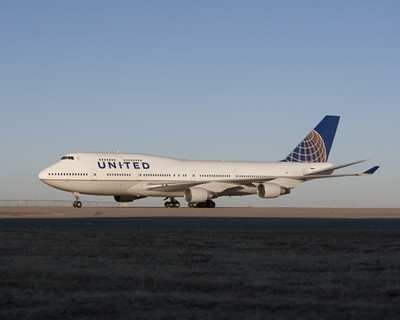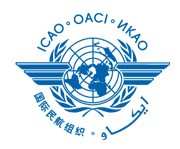Opening Testimoy Presented By ATA In European Court Of
Justice
 In the European Court of Justice Tuesday, the Air Transport
Association of America (ATA) called for the European Union
application of an Emissions Trading Scheme (ETS) to be dismissed
and declared illegal. The ATA, which brought the action on behalf
of all of its members, said in its argument that aviation
greenhouse gas (GHG) emissions should be regulated on a global
sectoral basis and that unilateral action by any country or group
of countries violates international law.
In the European Court of Justice Tuesday, the Air Transport
Association of America (ATA) called for the European Union
application of an Emissions Trading Scheme (ETS) to be dismissed
and declared illegal. The ATA, which brought the action on behalf
of all of its members, said in its argument that aviation
greenhouse gas (GHG) emissions should be regulated on a global
sectoral basis and that unilateral action by any country or group
of countries violates international law.
As stated in ATA's testimony before the ECJ, "If the EU ETS
regime implemented an international agreement agreed by third
countries, as well as by the EU, we would not be here today. ATA
challenges EU ETS because it is a unilateral measure, which has not
been agreed by countries outside the EU, yet nevertheless applies
EU law to third country carriers in third country airspace."
In applying the trading scheme to non-EU airlines, the EU is
violating customary international law and several treaty provisions
in the Convention on International Civil Aviation (commonly
referred to as the "Chicago Convention"), which dictates that
countries have sovereignty over the airlines in their own airspace.
As proposed, the EU ETS provisions would regulate an entire flight
from across the United States to the EU, even though the flight
would be in EU airspace for only a tiny fraction of the
journey.
ATA provided a vivid example of this in its testimony before the
ECJ, describing the application of the EU ETS to a flight by one of
its members, leaving from San Francisco and landing at London
Heathrow. From before the aircraft begins to taxi from the gate in
San Francisco, the EU emissions rules apply, however as a
percentage of total emissions, 29% take place in US airspace,
including those on the ground at the airport. A further 37% take
place in Canadian airspace, and a further 25% over the high seas.
Only 9% of emissions take place in EU airspace. Yet the ETS
will impose a levy on this carrier, and may also impose an excess
emissions penalty, based on emissions for the entire flight from
start to finish.

In its case against application of the EU ETS to its airlines,
ATA also outlined how the levies imposed by the scheme violate
provisions of the Chicago Convention and U.S.-EU bilateral air
services agreement and the Kyoto Protocol, which confirms that
International Civil Aviation Organization (ICAO) has the authority
to establish greenhouse gas policy for international aviation.
The ATA reaffirmed that its members are committed to continuing
their strong record of fuel efficiency and GHG emissions savings.
ATA and its member airlines are dedicated to developing
commercially viable, environmentally friendly alternative jet fuel
and working with manufacturers on advanced airframe and engine
technologies. Additionally, ATA continues to urge the U.S.
government to modernize the air traffic control system to improve
efficiencies and reduce emissions.
The airline industry advocates for a single, global sectoral
approach to be managed by ICAO, which stipulates that our industry
achieve a 1.5 percent average annual improvement in carbon and fuel
efficiency through 2020, carbon-neutral growth from 2020, subject
to critical government infrastructure and technology investments
such as air traffic control modernization, and an aspirational 50
percent reduction in CO2 emissions by 2050, relative to 2005
levels.

In October 2010, ICAO adopted a resolution with targets and
principles broadly consistent with the industry's global sectoral
approach, demonstrating that the industry and governments are
coalescing around a common platform for addressing aviation CO2
emissions at the global level. As proposed, the EU ETS limits
airlines' ability to have capital to invest in ventures to develop
alternative fuels, new fuel-efficient aircraft or equipment needed
to operate in a satellite-based air traffic control system.
The high court is expected to issue a ruling by the end of 2011
or early 2012.
 ANN's Daily Aero-Linx (04.16.24)
ANN's Daily Aero-Linx (04.16.24) Aero-News: Quote of the Day (04.16.24)
Aero-News: Quote of the Day (04.16.24) Airborne 04.10.24: SnF24!, A50 Heritage Reveal, HeliCycle!, Montaer MC-01
Airborne 04.10.24: SnF24!, A50 Heritage Reveal, HeliCycle!, Montaer MC-01 Airborne 04.12.24: SnF24!, G100UL Is Here, Holy Micro, Plane Tags
Airborne 04.12.24: SnF24!, G100UL Is Here, Holy Micro, Plane Tags Airborne-Flight Training 04.17.24: Feds Need Controllers, Spirit Delay, Redbird
Airborne-Flight Training 04.17.24: Feds Need Controllers, Spirit Delay, Redbird





